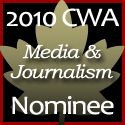The Canadian Manifesto: How the American Neoconservatives Stole My Country
I read an interesting paper by Mytheos Holt, a neoconservative intellectual, I suppose you'd call him; that discusses the fusion of right-wing groups, that currently make up the nucleus of the conservative movement.
It was simpler in the beginning, because there were primarily just two: libertarianism and traditionalism. However, in their quest for power, two additional cells were added to the mass: neoconservatism and paleoconservatism.
The Libertarian promotes individual freedom and the freedom to make money without government restrictions, like product safety standards or environmental regulations. They believe that the market will dictate safety standards, because if their product kills people, no one will buy it. I'd sooner know in advance if using that product could kill me, not wait for additional research or a new marketing strategy.
The Traditionalist wants a return to moral standards, which they see as only being possible in a Judeo-Christian society. This should clash with Libertarianism, because it dictates how a person can live. In many ways, organized religion is a form of collectivism, since members are expected to conform to a set of standards laid out by the hierarchy of the Church, which is like a regulatory board. This political group is more often referred to as the Christian Right or Religious Right.
The Neoconservatives believe that they are the intelligentsia of the movement. They create the ambigous policy statements that are designed to mean different things to different people. And despite the fact that movement conservatives claim to detest "elites", these people are elites. Wealthy and well educated puppet masters. As Paul Krugman says in his Conscience of a Liberal, becoming an intellectual in this movement is a good career choice. You will never be unemployed, moving into government when conservatives are in power, and into right-wing think-tanks when they're not. Neoconservatives are followers of Leo Strauss.
The Paleoconservative is committed to creating a society with a White Anglo-Saxon Protestant hierarchy (WASPs). Their views fit well with the Religious Right. Frank Schaeffer, son of Francis A. Schaeffer, whose book A Cristian Manifesto is believed to be the blueprint for the Religious Right, confirms that the movement was always about race.
Paul Weyrich agreed, saying that it was not the abortion issue that mobilized them, but the end of segregation. Weyrich was not only a founding member of the RR, but also a Paleoconservative. He helped to create The Council for National Policy, which is a kind of vanguard group, for all four elements of American conservatism. In Canada, the Civitas Society plays that role.
How Do You Sort it All Out?
With so many conflicting elements, how do you sort it all out? It can't be easy.
To appease the Libertarians, Stephen Harper has placed Maxime Bernier, the former head of the libertarian Montreal Institute, into his cabinet, and allows the Fraser Institute to draft policy.
To appease the Religious Right, he has moved their members into every nook and cranny of his government. In April, Le Devoir, published a piece on: Religious Fanatics in the Conservative Party (April 7, 2011).
They tell of a Liberal MP who was going into anaphylactic shock. Instead of providing medical assistance, three Conservative politicians, "Mark Warawa, Jeffrey Watson and Blaine Calkins, approached the sick woman, knelt down, placed their hands on her head and ... began incantations and prayers." Says Les Devoir:
This story is not widely known on the Hill, and for good reason. Those who witnessed the scene were shocked by this counter-productive religious reflex (the crowd was keeping the MP from breathing), but they are reluctant to condemn it for fear of being accused of intolerance.
They can get away with anything under the protection of religion. Others speak of members in almost constant prayer and some who even speak in tongues. (And you thought it was just Jason Kenney)
To appease the Neoconservatives is not that difficult. The Ezra Levants and David Frums get more media exposure than Paris Hilton.
And finally to appease the Paleoconservatives, he has taken Canada down perhaps the most dangerous path yet. He is allowing the Monarchist League to begin the transformation of our country, from one with a vast cultural heritage, to one whose history begins with Confederation. This not only ignores the contributions of those who were here centuries before the Anglo-Saxons, but also those who came after. We will be transformed from our wonderful cultural mosaic, to a work of still life.
Where is the Commonality?
Mytheos Holt discusses the clashing of views held by the four cells of the conservative movement.
Traditionalism has been taken over by religious conservatism, or what conservative writer Kathleen Parker refers to as the "evangelical, right-wing, oogedy-boogedy branch of the GOP." ("Letting Go of God." Washington Post. November 19, 2008)
David Frum was fired from the American Enterprise Institute for criticizing the Republican's stance on Obama's healthcare plan. Tom Flanagan was exiled from the Harper government for writing his book Harper's Team, even though he cut out almost half of it. (Harperland, Lawrence Martin, 2010) Gerry Nicholls, Harper's VP when he was president of the National Citizens Coalition, was fired when he publicly criticised our current prime minister.
Holt believes that there might be "too much individual freedom", that is creating a paranoia with the movement.
...because each of the four sectors of the movement views their compatriots as potential traitors, each of them believes it is absolutely essential that the problematic elements be tossed out before ideological war can be made on liberalism, since traitorous urges will inevitably manifest themselves on the battlefield. This paranoia induces a state of ideological paralysis, in which each of the different factions of conservatism find it impossible to build upon each others’ insights, for fear of accidentally accepting a liberal narrative. (The Unchanging Republic: Prospects for a New Conservative Fusion, by Mytheos Holt, 2010)Their only commonality is a hatred for liberalism and it consumes them. In his book Harperland, Lawrence Martin tells of speaking with a foreign leader, who claimed that while he openly criticizes his political opponents at home, he was quite taken aback by Stephen Harper, who he claimed actually "hates" his. What he must think of us.
The very word 'liberal' ignites an hypnotic induction that no amount of clapping will wake them from. But as Holt suggests, since the movement began, the character of liberalism has changed dramatically, yet the conservative arguments against it have not. They have only turned their arguments against each other, in their quest to find the perfect conservative specimen.
So can a fusion held together with hate survive, or will it undergo a fission, breaking apart as each pursues its own agenda?
Maybe the real question is not will it, but when?




Where do Red Tories, the immigrant voter, and Jews fit in these four catagories? I think there are divisions within the divisions, and that not including regionalism.
ReplyDeleteAlso every party is a fusion of different factions. The liberals have what seems to personality based factions(perhaps there is more to those factions, I don't, I never really got the point of the liberal party so perhaps you can correct me on this).
The Bloc has soft sovergienties, hard sovergientists, Autonomist, neocons sitting with socialists, etc... so when it became clear that the seperatist movement was going no where on May 2, it imploded hard as a movement. If your right about the cons it may take a major defeat for things to explode, the BQ could be an example of what could happen to the cons.
The NDP used to be just what I'd call Activists and Pragmatists, with some straddling the border, but I believe new factions and one older one has arisen over the past decade.
I believe the NDP took the BQ's Automist and Soft Soveriegnists who figured out the BQ was about as useful as toe jam, and both groups hate the liberals, and liked asymeterical federalism. This group isn't half as hard to work with as the media made out. Do well by Quebec, try to win government and thier happy. They're not stupid so they know that the NDP has to serve the interests of other proviences as well in order to win, so they haven't been too demanding.
Also the soft soveriegnists are dumb, they know that,they're not popular in the rest of Canada, so they let the Automists represent them or convert into Automists if they wish an active role in the NDP.
There is also an movement of former liberals into the NDP, but most I think are absorbed by.the Pragmatists and some by the Activists.
The older group that has been sort of reborn is the religious left and that could evolve into a nightmare for the religious right and conservative attempts to win immigrant communities.
Recently two books have come out heavily discussing the religious left, one by Bill Blakey and the other name I forgot. Also the Martin Signh leadership campaign has made it clear that the religious left, particularly amoung sihks will be a target of recruitment. Also remember that the NDP has a history of social gospel.
The religious left is speaking up and organizing again and it is far more rational then the religious right so I expect a future battle for souls if you will.
Also I believe the NDP will try and grow its coalition by reaching out to more groups.
I don't understand why the religious right even tolerate Harper. What ever happened to "do unto others" and "love thy neighbor" and "God is love"? If Harper gets away with telling others he hates the Liberals and NDP, he's soon going to forget to button his lip and then he'll be saying he hates paleoconservatives, libertarian conservatives and the religious right. He is the one whose life is built on hate (except for kittens) and he'll be the "glue" that blows the whole conservative movement apart.
ReplyDeleteGyor. There are degrees in every ideology, but the conservative movement has conflicting ideologies. Freedom from regulation, conformity to fundamentalism. Elitism bad except when it's not. Individual responsibility but not individual thought. The man who wrote the article I referenced is a conservative, and fan of everyone from Rush Limbaugh to Irving Kristol.
ReplyDelete